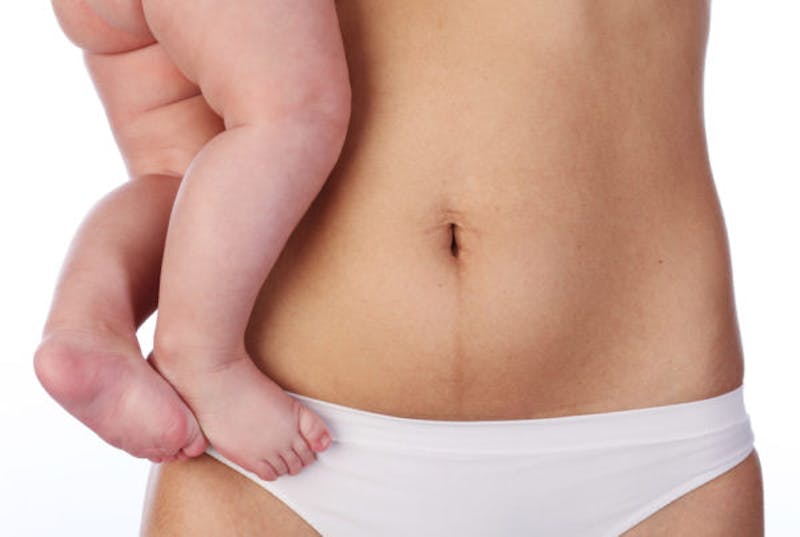
Recovering From Postpartum Prolapse
As anyone who has ever given birth well knows, the process of growing and birthing a human is tough work. As for the process of recovering from giving birth? Well, in many cases, it can be even harder! But all too often, doctors and maternity care providers focus so much on what happens to a pregnant person’s body before their baby is born and spend little time on what birthing parents need in order to heal effectively afterwards. The focus shifts to the baby and the mother is left to put the pieces of herself back together on her own. At Pelvic Pain Doc, we don’t agree with that mindset. We’re here to support all birthing parents on their journeys towards conception, throughout their pregnancies, and all the way through their postpartum recovery.
One of the more common issues our postpartum patients often struggle with is pelvic organ prolapse. This happens when one or more of the pelvic organs drops down from its normal position into the vaginal canal. A relatively common side effect of pregnancy and both vaginal and cesarean birth, pelvic organ prolapse can greatly interfere with a person’s ability to enjoy their normal life. Fortunately, by working with a postpartum specialist in New York, recovery is very possible!
In this post, we’ll talk about:
What postpartum prolapse isCauses and symptoms of pelvic organ prolapseThe different types of pelvic organ prolapseTreatment options for prolapse after childbirth
What is Pelvic Organ Prolapse?
As we’ve mentioned, pelvic organ prolapse (POP) happens when the pelvic organs (which comprises the uterus, vagina, cervix, bladder, urethra and rectum) drop out of position. It can be caused by a number of factors — including structural issues, obesity, constipation, trauma or injury — but it is most commonly brought on by pregnancy, labor and childbirth. That’s because a growing baby puts continuous and increasing strain on the pelvic organs, as well as the surrounding muscles and tissues, causing them to weaken over time. The labor and birthing process adds even more pressure to the pelvic floor. Understandably, a person’s risk for developing pelvic organ prolapse increases with the number of children they give birth to.
While pelvic organ prolapse can affect all genders, those who have carried and given birth to a child are more likely to have pelvic floor conditions such as prolapse, or urinary and bowel incontinence. Pelvic organ prolapse can occur after both vaginal and cesarean birth, but is significantly more likely for vaginal birth because of the increased pressure from pushing during labor. Postpartum prolapse is not a life-threatening condition, and the most appropriate treatment will depend on the type of prolapse and which organ (or organs) is affected.
What Causes Pelvic Organ Prolapse and How Does It Feel?
Before we can understand what causes pelvic organ prolapse, we first need to understand the function of the pelvic floor. The pelvic floor muscles are an area of tight muscle bands that form a hammock-like structure to hold your pelvic organs in place. As an important part of your core muscles, the pelvic floor also plays a crucial role in urinary, bowel and sexual function. During pregnancy, the pelvic floor muscles can become weakened which can affect their ability to support the pelvic organs, which can subsequently cause a wide range of uncomfortable pelvic pain symptoms.
So how do you know if you’re experiencing postpartum prolapse? The symptoms of pelvic organ prolapse include pelvic pain, abdominal discomfort and pressure in the vagina. Most notably, you may feel a sensation that something is bulging or protruding into or past the vaginal canal. A weakened pelvic floor or pelvic organ prolapse can also lead to urinary and bowel incontinence, or postpartum pain during sexual intercourse. Typically, prolapse is at its worst immediately post-childbirth and improves over time with proper rehabilitation of the pelvic floor.
Types of Prolapse After Childbirth
Since there are a number of organs within the pelvic region, there are several different types of pelvic organ prolapse. The technical name for each refers to the organ that has dropped. These are the most common types of pelvic organ prolapse that may occur after giving birth:
Cystocele Prolapse: This occurs when the bladder drops and presses into the anterior (front) wall of the vagina.Rectocele Prolapse: This occurs when the rectum falls and presses into the posterior (back) wall of the vagina.Uterine Prolapse: This occurs when the cervix and uterus drop down into (and may protrude from) the vaginal canal.
Each type of postpartum prolapse may occur alone or in conjunction with another organ prolapse. No matter what kind of prolapse you may be dealing with, a pelvic pain specialist can help you retrain your pelvic floor muscles and regain your pelvic floor strength.
Recovering from Postpartum Prolapse
As pelvic pain specialists, we believe each patient has the power within themselves to overcome their symptoms. Sometimes they just need a little support along the way and that’s where we come in. When it comes to recovery from postpartum prolapse, there are a number of things we can do to help you regain control of your pelvic floor muscles to bring support back to your pelvic organs, depending on the degree of prolapse. Here are some of the best treatment options for pelvic organ prolapse after childbirth.
Pelvic Floor Physiotherapy: As the least invasive (and arguably most effective) treatment for postpartum prolapse, pelvic floor physiotherapy involves completing specific breathing, movement and strength exercises to regain control of your pelvic floor. These targeted exercises are meant to reduce pressure on the pelvic floor and restore these muscles to their proper function. A pelvic floor physiotherapist will teach you how to relax the pelvic floor when necessary (for things like bowel elimination or sexual intercourse), while also rebuilding the necessary strength to hold your pelvic organs in place. The key, of course, is to stay consistent. If you practice your pelvic floor exercises daily (or according to your pelvic floor specialist’s recommendation), you might be surprised by how quickly you can recover from postpartum prolapse.Topical Vaginal Estrogens: This type of topical medication for pelvic organ prolapse may be helpful in recovery by increasing collagen and improving the strength of the vaginal epithelium.Pessary: A pessary is a minimally invasive, silicone device that can provide additional support to the pelvic organs. It does not fix pelvic organ prolapse, but it can give you temporary relief so that you can resume your usual daily activities or, you know, take care of your new baby! A pessary may be a good option for those who wish to have more children and are not quite ready for more invasive procedures.Surgery: In more serious cases of pelvic organ prolapse, surgery may be the best treatment option. The goal of pelvic organ surgery is to return the pelvic organs to their original positions by repairing the weakened pelvic floor tissues or providing additional support to the organs using a mesh sling. In extreme situations, the affected organ may be removed (for example, a hysterectomy for uterine prolapse).
If you’ve recently given birth, huge kudos to you. Your body has done an amazing thing by growing a new little person for nine months and then bringing them into the world! But if you’re experiencing pelvic organ prolapse after childbirth, it can feel (quite literally) like your body is falling apart. You’re already going through so many new things — you’re a parent now, after all — and you deserve to feel like yourself again. So if you’re ready to take the next step in your postpartum recovery, we’ve got you. Contact Pelvic Pain Doc to book a consultation with Dr. Sonia Bahlani today.


